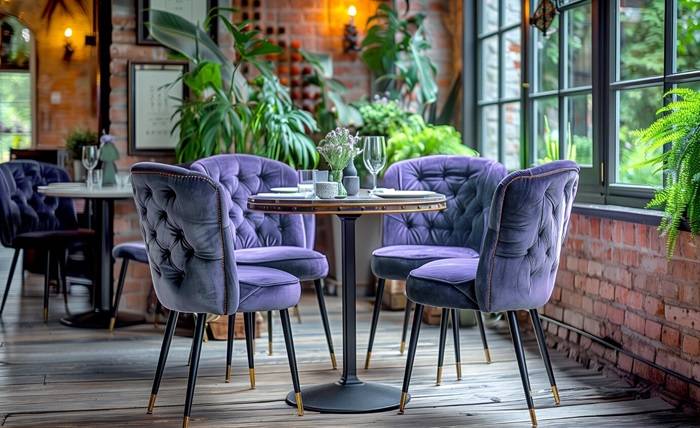The restaurant industry has seen a radical transformation as a result of the resurgence of outdoor eating, which was spurred by the need for open areas, fresh air, and a relaxed dining experience. The COVID-19 pandemic has not only altered patrons’ dining experiences, but it has also spurred a renaissance in outdoor furniture design. Creating cosy outdoor spaces that rival interior design and comfort is becoming more and more significant these days.
THE SHIFT TOWARD OUTDOOR DINING EXPERIENCE
Outside dining is far more appealing than just a quick fix for health issues. It represents a lifestyle option for customers looking for an escape from confined settings and a reconnection with nature. Industry surveys state that many customers increasingly choose businesses that provide alfresco dining alternatives, making outdoor seating a crucial consideration in their decision-making process.
THE EVOLUTION OF OUTDOOR FURNITURE
In the past, outdoor restaurant furniture frequently prioritized durability and usefulness over comfort. Early designs were made of weather-resistant materials such as wood and metal. However, as outdoor eating grew in popularity—particularly in cities with limited space—designers started incorporating comfortable materials and ergonomic ideas into their works.
EMBRACING PLUSHNESS
The plush texture and increased comfort of plush outdoor furniture make it stand out. This category includes materials and styles that put comfort first without sacrificing toughness. Nowadays, it’s typical to find soft textiles, cushioned chairs, and high-quality cushions, which provide diners with an equally pleasant hideaway as interior environments. Proper support is ensured by ergonomic features, which encourage longer meal sessions and more enjoyment.
FUNCTIONAL BENEFITS
The switch to luxuriant outdoor furniture is not just fashionable but practical as well. Comfort may greatly improve the total eating experience, which impacts customer happiness and dwell time. Ergonomic elements, such as lumbar support and movable chairs, accommodate various requirements and guarantee that customers are comfortable during their meals. Additionally, improvements in weather-resistant materials and upkeep techniques have solved durability issues, making comfortable furniture an affordable long-term investment for restaurant operators.
AESTHETIC APPEAL
In addition to being comfortable, luxurious outdoor furniture adds visual appeal and atmosphere to eating areas. Design trends include a wide range of hues, textures, and patterns that complement restaurant themes and branding tactics. With customization choices, businesses may design unique outdoor spaces that appeal to their target audience and project an air of luxury and flair. Comfortable outdoor furniture blends perfectly with various architectural styles and outdoor environments, from sleek modern to rustic charm.
SUSTAINABILITY
The furniture business has embraced sustainable processes and materials in response to the rising environmental concern. In an effort to reduce their negative environmental effects, producers of plush outdoor furniture are increasingly adopting eco-friendly textiles, recycled materials, and wood that have been acquired sustainably. These selections present plush outdoor furniture as a socially aware option for outdoor eating environments, in line with restaurant sustainability efforts and customer attraction to the environment.
CASE STUDY
Luxurious outdoor furniture has been successfully incorporated into a variety of hospitality locations worldwide. To create welcoming spaces that draw in discerning customers, high-end restaurants in metropolitan areas, for example, have improved their outdoor dining areas with cozy sofas, lounge chairs, and table sets. Consumer feedback highlights the strategic benefit of investing in plush outdoor furniture by emphasizing the favorable effects of comfortable seats on overall dining pleasure and repeat business.
CHALLENGES AND CONSIDERATION
Although luxurious outdoor furniture has many enticing benefits, it also has drawbacks. The cost factor is still important, especially for businesses with tight budgets. Careful design, a commitment to high-quality materials and maintenance, and weather resilience are also necessary. However, the long-term advantages of improved customer experience and operational efficiency frequently surpass these short-term difficulties. Thus, sophisticated outdoor furniture is an investment worth considering for forward-thinking restaurateurs.






